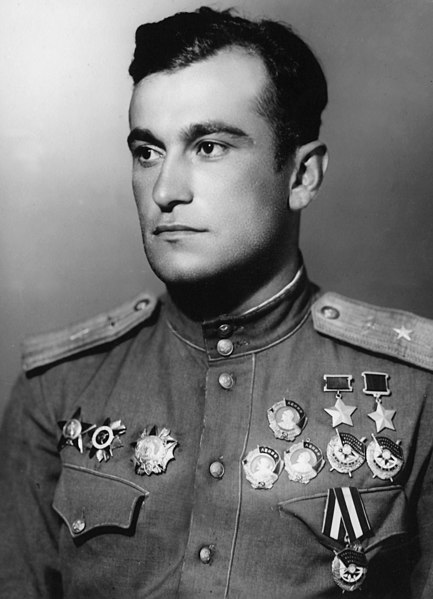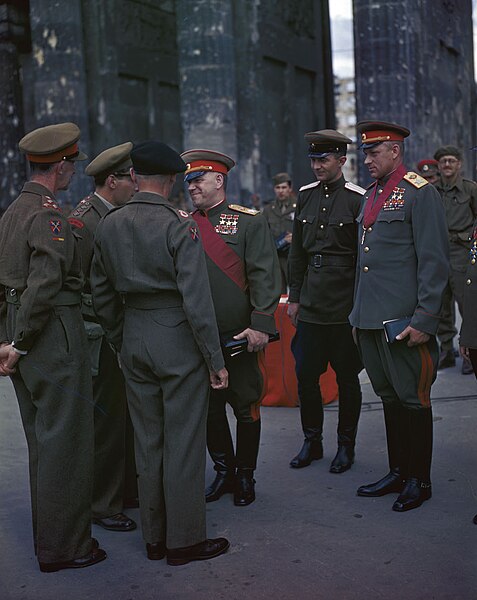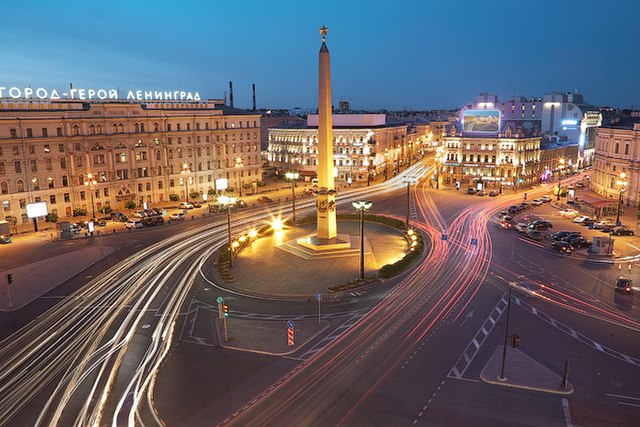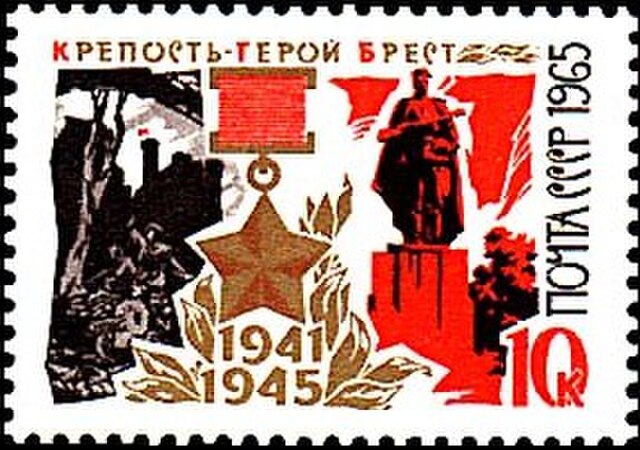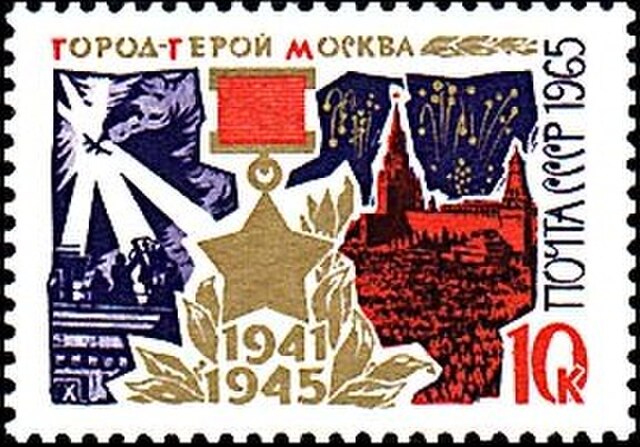Amet-khan Sultan was a highly decorated Crimean Tatar flying ace in the Soviet Air Force with 30 personal and 19 shared kills who was twice awarded the title Hero of the Soviet Union. Despite having been able to avoid deportation to Uzbekistan when the entire Crimean Tatar nation was repressed in 1944 due to his father's Lak background, he refused to change his passport nationality listing to Lak or identify as one throughout his entire life despite pressure from government organs. After the end of the war, he worked as a test pilot at the Flight Research Institute in Zhukovsky and mastered piloting 96 different aircraft types before he was killed in a crash while testing a new engine on a modified Tupolev Tu-16 bomber. He remains memorialized throughout Ukraine and Russia, with streets, schools, and airports named after him as well as a museum dedicated to his memory.
Amet-khan in 1945
Amet-khan Sultan by his Yak-7 fighter in Stalingrad
Amet-khan as test pilot
Grave in Novodevichy Cemetery
The title Hero of the Soviet Union was the highest distinction in the Soviet Union, awarded together with the Order of Lenin personally or collectively for heroic feats in service to the Soviet state and society. The title was awarded both to civilian and military persons.
Marshal Georgy Zhukov (center) wearing three Hero of the Soviet Union medals and Marshal Konstantin Rokossovsky (right) wearing two (1945)
Hero of Soviet Union obelisk of Saint Petersburg.
Hero-Fortress of Brest
Hero-City of Moscow

